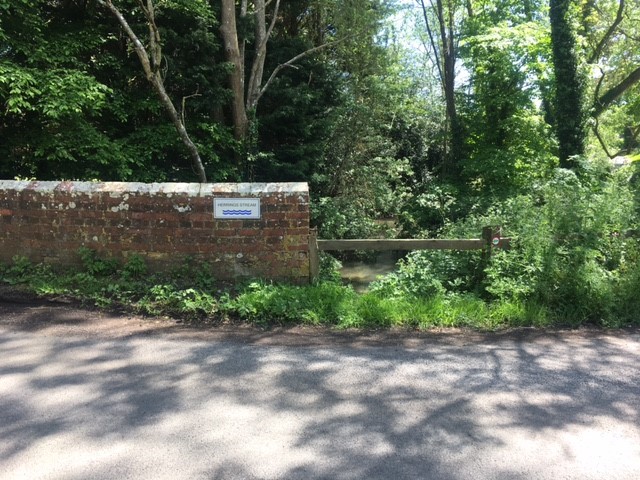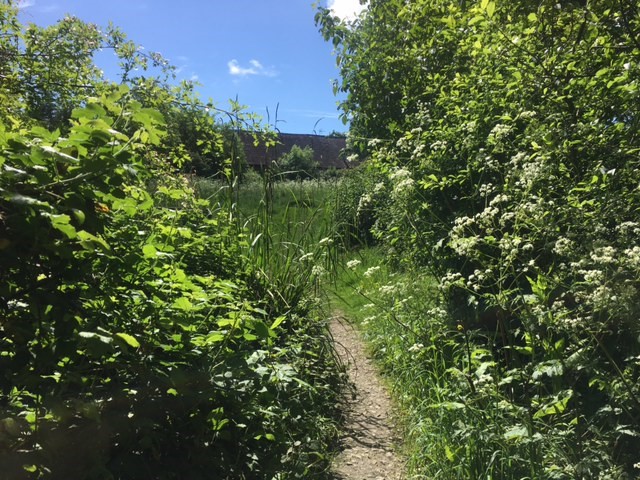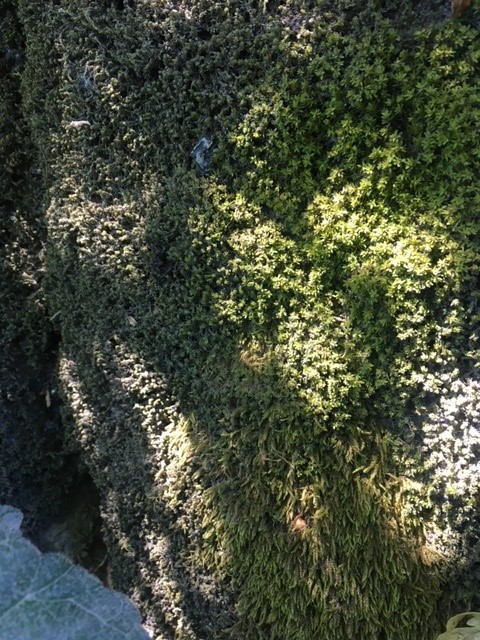In contrast to the previous weeks easy travelling I was less delighted by road conditions and surroundings when I cycled from Burgess Hill to the lanes between the town and the A23 on a sunny Wednesday last week. I swore loudly on Burgess Hill High Street when I hit a large pothole then grumbled my way along Gatehouse Lane, past more fields bulldozed ready for new houses, gateways fenced and blocked with plastic barriers and the rumble of diggers behind temporary fencing. I shooed a cat away from a Slow worm and passed a rescue truck pulling a car out of a ditch. The new crossing on the Burgess Hill bypass with space for pedestrians, cyclists and horses was nice though.
Once I turned off onto High Hatch Lane I could relax and enjoy the gentle countryside, curious lane and house names, and look forward to the prospect of freewheeling downhill on the way home. Before the long drag uphill there was Didymodon sinuosus on a brick bridge and Pulvigera lyellii on an Ash leaning over the stream.
Descending again and finding a spot in the sun I stopped and recorded a few things on the base of Ash and ditch banks. Round the corner, Didymodon nicholsonii and Funaria hygrometrica grew along the centre of the tarmac lane and Lewinskya affinis in an old hedge but I was still following the edge of TQ21Z and it wasn’t until I got to a corner of woodland that I was safely in my target tetrad of TQ21U.
I hadn’t been hopeful about this little corner of trees but a path leading in from the road and nest boxes put up by the Flora and Fauna group on trees were promising signs. There was Atrichum undulatum, just a small patch, and Mnium hornum along a bank at the far edge so it seemed to be a remnant of ancient woodland.
Plagiothecium succulentum shone out through Isothecium myosuroides at the base of an Oak and some more Isothecium had the boat-shaped leaves of Isothecium alopecuroides. Thick mats of Lophocolea heterophylla covered a stump and areas of ditchbank.
The next stop was in Mill Lane where I had planned to follow a footpath which followed the stream. Signs announced that the footpath had collapsed and deep mud at the start was not encouraging. The bridge across Herrings Stream occupied me for a while, watching Demoiselles and tawny damsel-flies flit around a veteran Ash leaning over the stream. Lurid feathers of Homalothecium sericeum coated the trunk a few metres up and below this a brown moss cover looked like Syntrichia latifolia, dark green when wet but already dried out in the morning sun here. Another mystery moss waved in the stream, attached to the brick bridge below a thick coating of Rhynchostegium riparioides. I need to fashion a grapnel to hook up some of this robust-looking moss.

A bit of scrubby hedgerow with a pond just visible in the garden beyond was quite mossy with Leskea polycarpa and Plenogemma phyllantha on Field Maple. Nestling amongst some Zygodon viridissimus which I took home to check were a few wide leaves of Syntrichia papillosa, gemmae in a line along the nerve.
The footpath was closed further on as well and I stopped for a while, enjoying the smell of Wisteria and Cow Parsley, my bike frightening a pair of huge dogs, before deciding to follow it anyway.

The soft, grassy path led to wooden bridge crossing the Herring Stream. It was edged with Scleropodium cespitans and a small, dark area of Dialytrichia mucronata. Another ancient Ash was brown with thick moss at the base and I was able to get close and confirm Syntrichia latifolia. Every bridge over the stream seems to have an adjacent Ash tree.

Then I retraced my steps and headed west along Pookbourne Lane, slowly descending to a small brook. Lunularia cruciata on the banks was a new find for the day but there wasn’t much else by the stream.
The base of a Field Maple on the lane bank was frilled with Neckera complanata at its base and a tiny bit of Pleuridium acuminatum grew on the vertical soil bank. I thought a pleurocarp might be Oxyrrhynchium schleicheri on the slightly sandy soil where this moss is occasionally found but the cells weren’t narrow enough for that species and I haven’t pinned it down yet.
TQ21U which had 20 species recorded now has 47 and can turn green. TQ21Z just has a few new additions, going from 54 to 58 species recorded.

Some nice finds!
LikeLiked by 1 person